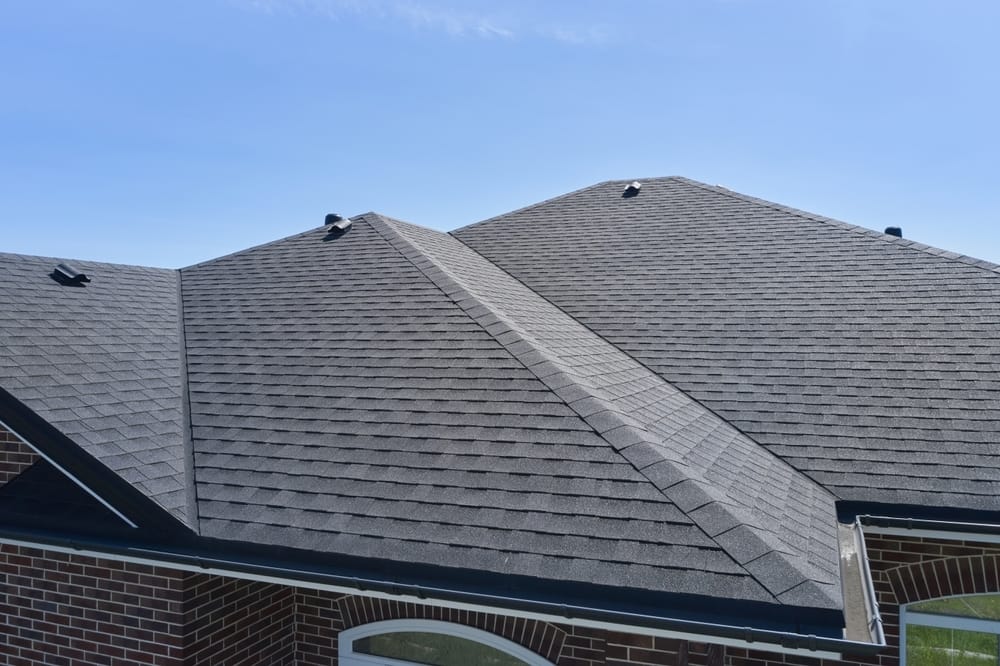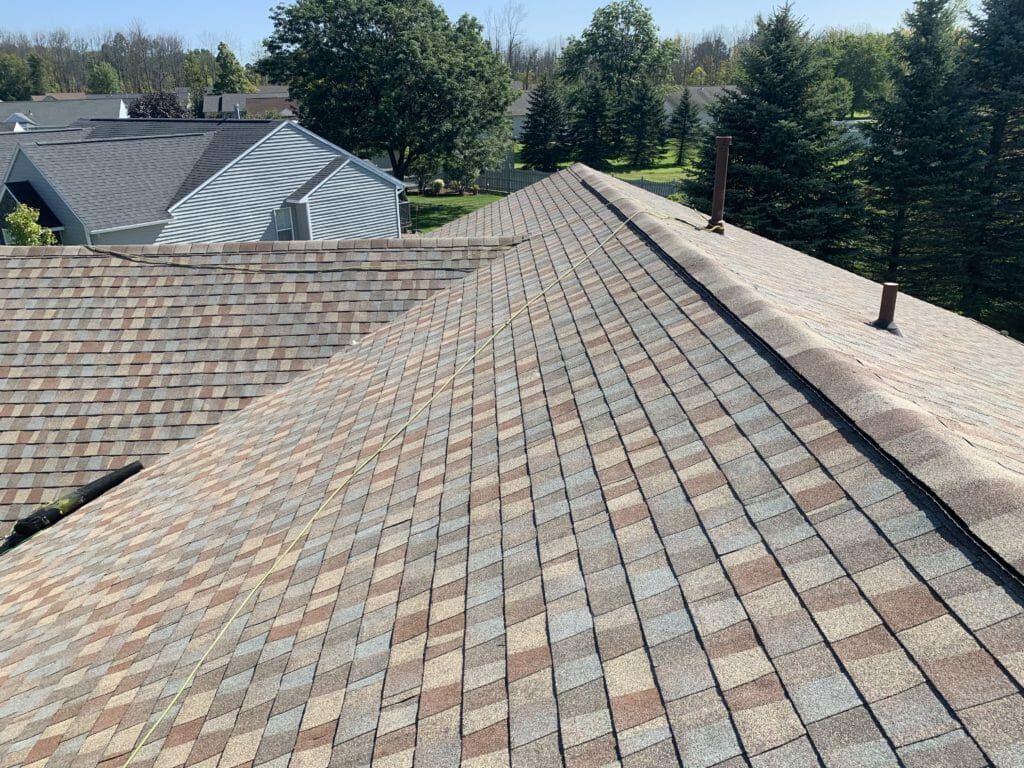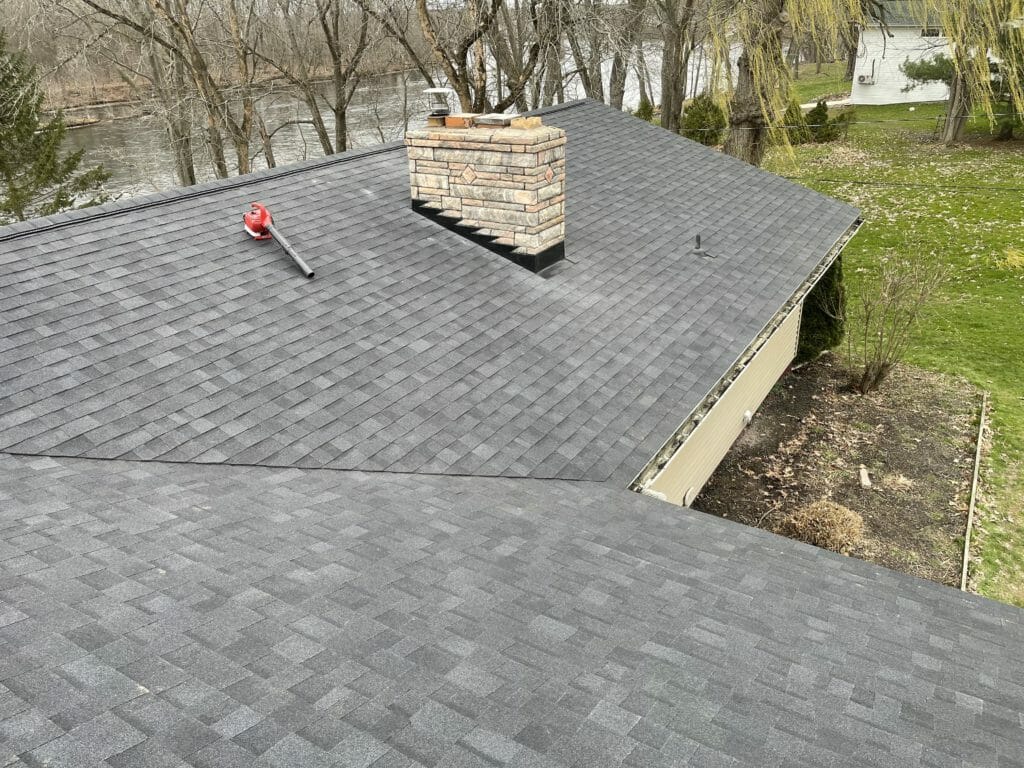Ever found yourself planning a roof repair or replacement and hearing words like slope, angle, and pitch thrown around? It may seem a bit technical, but it’s actually the starting point for any successful roofing project. Finding a roof pitch number is easier than you might think, especially with a simple roof pitch calculator or a tape measure and a little know-how.
Your roof’s pitch is a big deal. It affects everything from how well your roof sheds water and snow to the type of roofing materials that can be installed on it. Getting the calculated roof pitch wrong can lead to serious headaches down the road, such as leaks or an improperly installed roof that will not last.
What Exactly Is Roof Pitch?
So, what are we talking about when we say roof pitch? Simply put, it’s a measurement of your roof’s steepness, often called the roof slope. It is written as a fraction, like 6/12 or 8/12, which represents the roof pitch ratio.
This fraction represents the rise over the run, so the formula is rise/run = roof pitch. The rise is the vertical height, or how much the roof rises vertically, and the run is the horizontal length. In roofing, the run is almost always standardized to 12 inches to create a consistent roof measurement.
A 6/12 pitch means your roof rises 6 inches for every 12 inches it runs horizontally. The higher the first number, the steeper the roof pitch you’ll have. A 12/12 pitch is a sharp 45-degree pitch angle, while a 4/12 pitch is much more gradual.
Why Your Roof’s Pitch Matters So Much
You might be thinking, as long as it keeps the rain out, who cares about the pitch? But the roof pitch angle of your roof plays a huge role in its performance and longevity. It influences some very important factors for your home.
Water and Debris Runoff
The primary job of your roof is to keep water out, and the pitch is a key factor in this process. A steeper roof, common in areas with heavy rain or snow, is great at shedding water quickly. This speed prevents water from seeping under your shingles.
A lower-pitched roof drains much slower. This means water sits on the surface for longer, giving it more time to find any potential weak spots. Debris like leaves and pine needles also tends to build up more on less sloped surfaces, potentially leading to clogs and water damage near rafter tails.
Choosing the Right Roofing Materials
Not every material you’ll find works on all roof pitches. Most asphalt shingles, for example, have a minimum slope they can be installed on, typically around a 4/12 standard roof pitch. If you go any lower, you risk wind-driven rain getting pushed up underneath them.
For low-slope roofs, you have to use different materials like modified bitumen or thermoplastic polyolefin (TPO) membranes that are sealed at the seams. This is because the water won’t run off nearly as fast.
Your Home’s Look and Feel
Beyond the practical side of things, your home’s roof pitch also defines its architectural style. Think of a classic A-frame house with its incredibly steep roof reaching from the roof ridge almost to the ground. Compare that to a modern home that might have a very low, subtle slope.
The pitch impacts your home’s curb appeal and even the amount of attic space you have inside. It’s a foundational part of the building’s overall design, from the center ridge down to the eaves.
Using a Roof Pitch Calculator: An Easy Guide
Calculating roof pitch is pretty straightforward. You just need to get two numbers: the total rise and the run. With those roof pitch measurements, any roof pitch calculator can do the rest of the work for you.
Step 1: Get Two Simple Measurements
You’ll need a good tape measure and a carpenter’s level that is at least 12 inches long. You’re going to create a right triangle to find your measurements. The level will form the flat bottom (the run), and the tape measure will find the vertical height (the rise).
Step 2: Measure From Inside Your Attic
The most accurate roof pitch comes from inside the attic. You can measure roof pitch directly from the underside of a roof rafter. It’s safer and avoids any issues with shingle thickness messing up your numbers.
Just press your level horizontally against the bottom of a rafter. Then, measure exactly 12 inches along the level from the end touching the rafter. From that 12-inch point, measure straight up to the bottom of the rafter. That distance is your rise, which is the rise divided by 12 to determine the roof pitch.
What if You Can’t Get in the Attic?
If you do not have attic access, you can measure from the roof’s surface, but it’s less ideal. Layers of old shingles can make your rise measurement a little off. But in a pinch, you can place your level on the shingles, measure out 12 inches, and then measure down to the roof surface to find your pitch measurements.
Digital Tools for an Accurate Roof Pitch
Besides the traditional method, you can also use modern digital tools to find your roof’s pitch. Smartphone apps are available that use your phone’s built-in gyroscopes to find the angle instantly. You can also find dedicated digital protractors or angle finders at hardware stores that give a precise reading when placed on the roof surface or a rafter.
Low-Slope vs. Steep-Slope Roofs
Roofs generally fall into two categories based on their pitch. A low-slope roof is typically anything from flat up to a 3/12 pitch. A conventional, or steep-slope, roof is anything above that.
A steeper pitch not only sheds water better but also affects the overall rafter length needed for the roof. A steep roof requires a longer rafter to cover the same horizontal distance compared to a low-slope roof. Getting an accurate roof pitch is vital before ordering materials. You can even find a roof pitch diagram online to visualize these differences.
Our Conclusion
Now you know that a roof pitch isn’t some complicated term only roofing contractors understand. It’s simply a measure of how steep your roof is, and it dictates how your roof protects you from the elements. A quick measurement and a roof pitch calculator can tell you what you need to know for your next project.
Once you’ve figured out your pitch and start thinking about materials or repairs, feel free to contact us. With over 20 years of experience right here in the Liverpool, NY, area, we at Dynasty Roofing know what works best for our local weather and home styles. We can also help you determine the best roofing materials for your home’s pitch.





